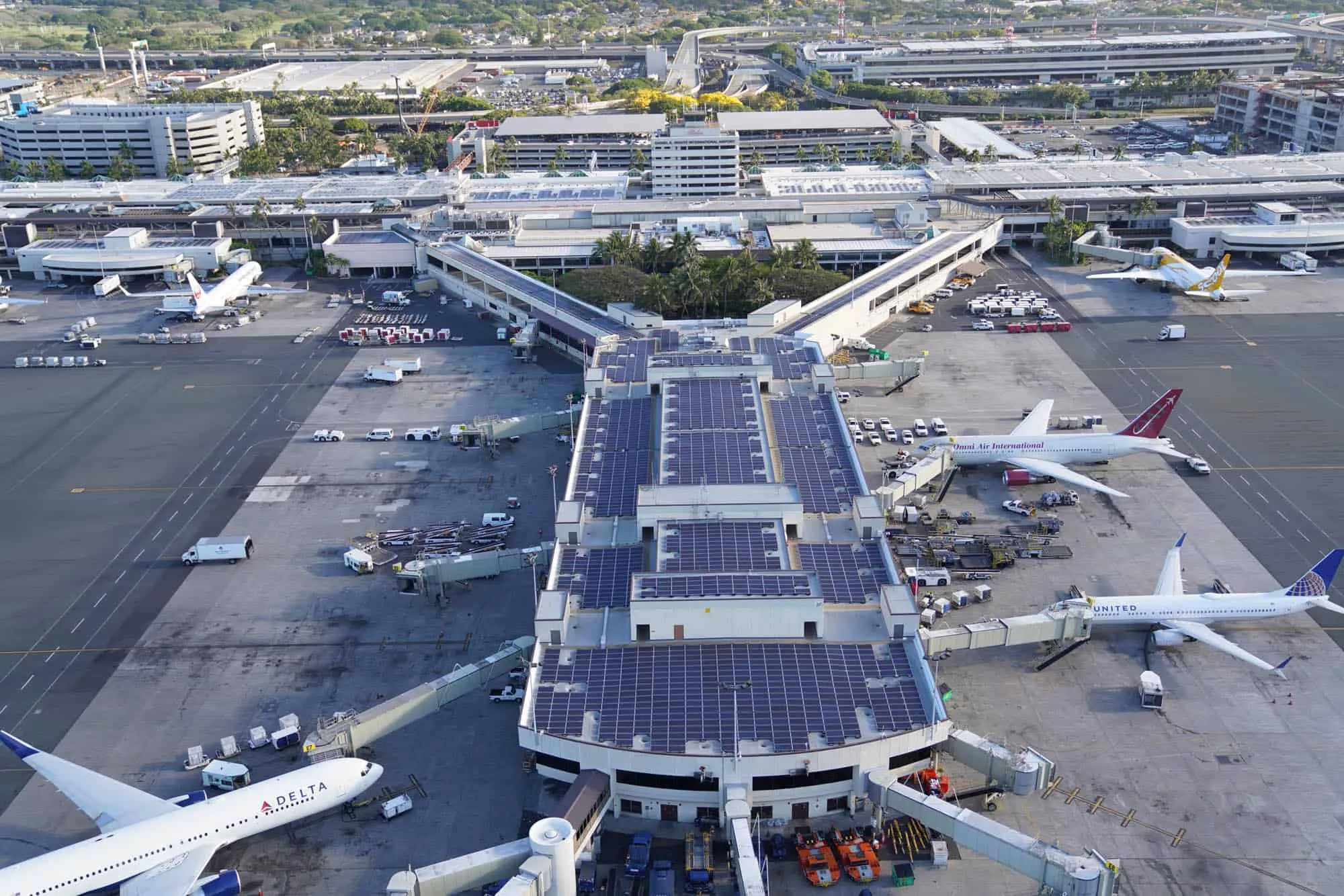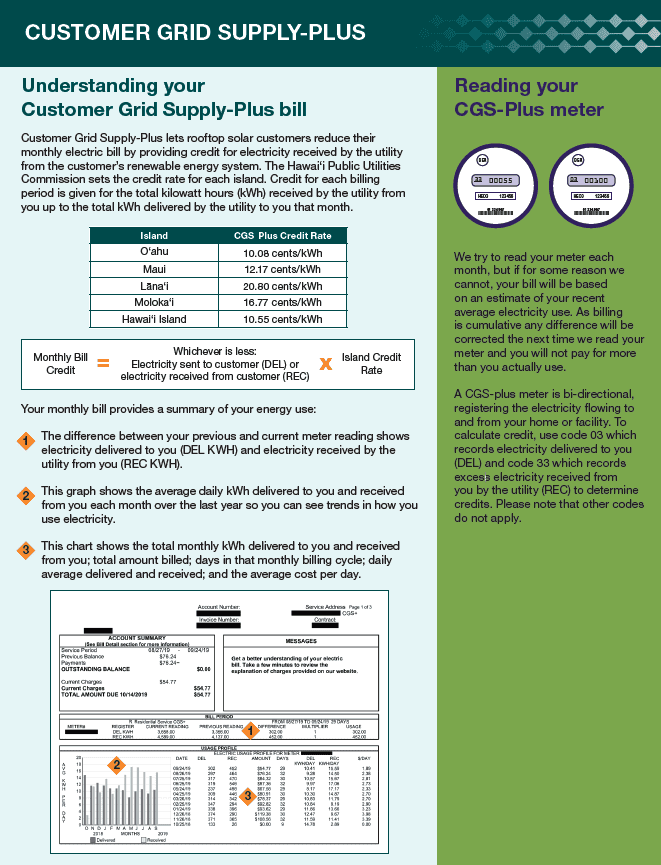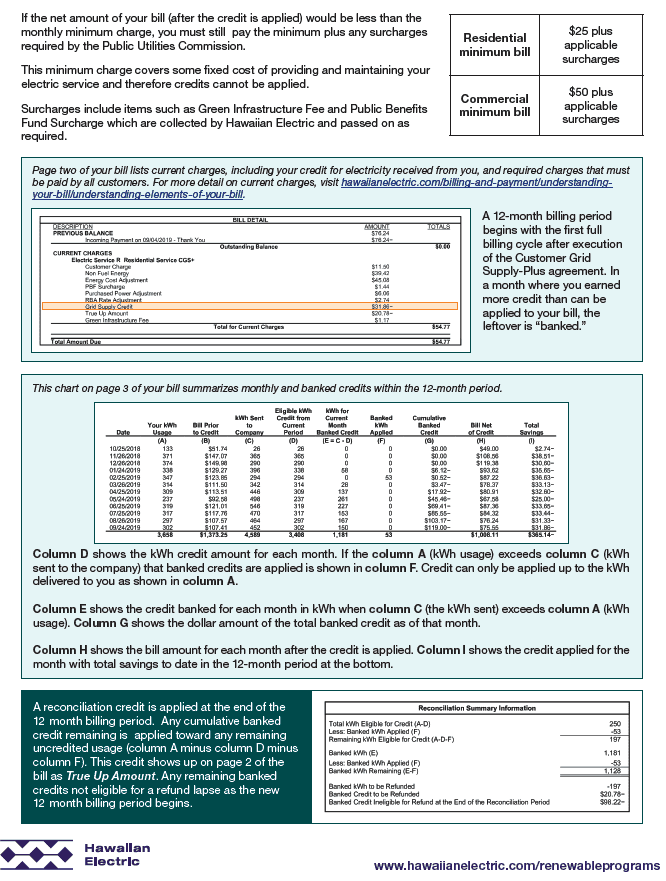After consulting with a licensed tax professional to verify you are eligible for the Hawaii State Tax Credit, you will need to complete and attach the State of Hawaii – Dept. of Taxation Form N-342 to your State tax return. Instructions for filling out the Hawaii DOT form are available HERE.

You Have Questions? We Have Answers
These are some of the household items you can power during a power outage:
- Refrigerator
- Freezer
- Lightbulb
- Ceiling fan
- Laptop
- Wi-Fi router
- TV
- Fish tank
- Garage door opener
- Electric water dispenser
- Cellphone charger
By installing more than one battery, you could also power a larger appliance, such as:
- A/C – Central or window unit
- Oven/stove
- Water heater
- Electric dryer
- Pool pump
No, the ITC is a nonrefundable credit, not a deduction, making it much more valuable. The credit directly reduces the amount of tax you owe, providing a dollar-for-dollar reduction of your tax liability. So, if the tax credit you are eligible for was equal to $10,000, this would lower the amount of taxes owed by the corresponding $10,000.
A ‘write-off’ or deduction on the other hand, reduces how much of your income is subject to taxes. Deductions can lower your taxable income by the percentage of your highest federal income tax bracket. So, if you fall into the 24% tax bracket and receive a $10,000 deduction, this will save you $2,400 on your taxes.
Commercial energy systems are eligible for additional business tax deductions (accelerated depreciation). Visit our Commercial Solar Page for more information on solar tax incentives for commercial businesses.
The ITC is a credit against your tax liability, so it requires you to have a balance owed to the IRS for that tax year.
- In the event you are retired and do not have any tax liability, we recommend financing your system through a Lease or PPA (Visit our Financing Page).
- If you are claiming a loss for this tax year due to write-offs from other sources, you could install the system and carry the balance of the ITC forward to claim in a future tax year where you do owe taxes to the IRS.
The Hawaii Energy Credit is considered a ‘nonrefundable credit,’ so you will not get a refund for the balance. However, you can carry over the balance of any unused amount of the tax credit into the following tax year until it is exhausted.
Alternatively, you may elect to file with the ‘refundable’ option where the State will cut the system owner a check for the credit amount reduced by 30% (effectively 24.5%), regardless of their tax liability. This option offers some flexibility; however, the refundable credit is treated as taxable income by the IRS and will be subject to federal income taxes during the year in which it was received.
After consulting with a licensed tax professional to verify you are eligible for the ITC, you will need to complete and attach IRS Form 5695 to your federal tax return. Instructions for filling out the IRS form are available here.
We recommend doing installations on roofs that are less than 10 years old. We also recommend adding the solar system to your home insurance policy once the installation has begun. If a new roof is needed, then the uninstall and re-install of the solar system will be covered by your home policy in the event of weather damage. The price increase to home insurance is negligible to add a solar electrical system.
When an uninstall and re-install is needed, the roofers should NOT be un-installing your solar electrical system. Sunspear Energy will handle that for you.
An unintended benefit of installing solar panels is that the panels will shade the roof, keeping the house cooler, and also extend the life of your roof shingles.
The Hawaii Energy Tax Credit allows owners of single-family homes to claim a State income tax credit up to 35% of the actual cost of the system or $5,000, whichever is less.
Each ‘System’ is defined as 5 kilowatts (kW); therefore, a 10kW would be eligible for up to $10,000 in Hawaii State Tax Credits (see example calculation below). The system must be fully installed and “operational” by 12/31 of the year you wish to file tax credits for.
Example:
A 7.5 kW system costs $40,000, the first 5kW ‘system’ would receive a $5,000 state tax credit. The remaining 2.5kW ‘system’ (1/3 of the total system size) would receive an additional 35% credit pro-rated ($40,000 x 33% x 35% = $4,620).
The Hawaii Tax Credits on a 7.5kW system would be $5,000 + $4,620 = $9,620
Your system will immediately increase the value of your property upon installation and can also be exempt from property tax. After your system “saves” for itself, your system electricity will be free for years and years to come. A customized, site-specific proposal will be provided to you at no cost. Due to the importance of this investment, an at-home presentation is highly recommended.
Going solar is a long-term investment. We provide competitively priced systems with the highest level of quality. Signing incentives are available. In addition to competitive pricing, our focus is on customer service and communication!
These are some of the household items you can power during a power outage:
- Refrigerator
- Freezer
- Lightbulb
- Ceiling fan
- Laptop
- Wi-Fi router
- TV
- Fish tank
- Garage door opener
- Electric water dispenser
- Cellphone charger
By installing more than one battery, you could also power a larger appliance, such as:
- A/C – Central or window unit
- Oven/stove
- Water heater
- Electric dryer
- Pool pump
If the current homeowner financed their solar energy system with a loan, in most cases, the loan will always remain the current homeowners responsibility even if the property is sold. Solar loans vary in terms and conditions and some may be transferrable to a new home buyer, similar to the transfer of a solar lease. If your client is considering taking over a solar loan, follow the steps outlined above for a solar lease system to ensure you and your client understand the deal thoroughly.
The asking price for the property may reflect the loans held by the previous owner which means in most cases the price of the home also factors in the cost of the originally installed system and the long-term benefits it provides.
If the property your client is interested in has a leased solar energy system, it means that the current homeowner sends a monthly payment to a financing company that owns the system on the home’s rooftop. Before you advise your client to proceed with the home purchase, you’ll want to do some additional due diligence and gather some more information about the solar lease terms so that you can provide knowledgeable advise and show an understanding of the deal.
Some general questions to have answered by the lease contract and current homeowner:
Is there a purchase or ‘pay off the remainder’ option?
Some solar lease agreements will allow the current homeowner to purchase the system for a fixed dollar amount as specified per the terms of the contract. Depending on the age and condition of the system, this may be a desirable option if your client does not want to assume the monthly lease payments. The terms and conditions for this option can vary depending on the lease provider, contact your Sunspear Energy Consultant for assistance with understanding the fine print of the lease contract. Purchasing the system or ‘paying off the remainder of the lease’ could be baked into the home sale transaction.
What are the monthly fees?
Most lease and PPA’s have a monthly payment, and if you take over the lease from the current homeowner those payment responsibilities will be assigned to you. You want your client to understand what those payments amount to and what percentage of savings they provide relative to purchasing power from HECO (the utility).
Are the lease payments escalating?
Most solar leases have an escalator where the monthly payments increase by 1-3% year-over-year. There are cases in Hawaii where solar leases were sold 6-10 years ago with a higher escalator and solar prices and regular electricity prices were much higher than they are now. It is important for your client to know how the payments they are taking on will change over time so that they can forecast their cost of home ownership.
What is the term of the lease?
Solar leases are typically 20-25 years in length; depending on how far into the lease term the existing system is, your client can forecast the timeline left on their payment responsibility.
Final Considerations for Leased Systems:
Before your client assumes the responsibility of a solar lease make sure they understand their own financial situation. Lease providers will typically require that the new home buyer meets their credit requirements before approving assignment of the lease. It’s also important to be aware that leases can raise your debt-to-income ratio, which could affect a new home buyer’s ability to qualify for a mortgage and other potential long-term financing needs in the future.
Here’s some information on how the Customer Grid Supply-Plus (CGS+) rate program that you will fall under after solar is installed would work. There is a minimum HECO bill for residential customers of $25 which basically covers the electric company’s fixed cost of providing and maintaining electric service to your home & neighborhood.
Example:
For your power usage, the solar will offset all your daytime electricity usage, excess power will charge the batteries, and once the batteries are fully charged, you will send power back to the HECO grid and get credits at 10.08 cents per kWh. At nighttime after the sun sets, your Tesla batteries will discharge to meet the power needs of the home, once the batteries are fully discharged, you will begin to purchase power from the grid. Right now, HECO’s ‘R’ rate is about 25 cents, so you would pay 25 cents less than the 10 cents credit you have made during the daytime for a net cost of 15 cents per kWh.
Customers have a tendency to use more power overall after they’ve installed solar because it seems a bit more guilt-free, so our system is sized based on your previous total annual electricity consumption of ~16,000 kWh.
So what your monthly bill is can fluctuate depending on a number of things:
- Seasonality: Summer months have more intense sunlight and longer days so the PV system will produce more power during the summer.
- Customers tend to use more power in the summer months also if they’re running their air conditioning more often.
- You may build up some additional credits during summer time that will be carried over and used up in the winter time where the sun is less intense and you need to purchase more power from the grid.
- The goal is for the credits to balance out over the 12-month billing period
- Weather Patterns: as you know in Hawaii, there are micro-climates and weather patterns (long stretches of rainy days, etc.) that will impact the solar production on a monthly basis
- Home Power Consumption Habits: It’s helpful to be more conscious of your electricity usage after you’ve installed your solar energy system, because the higher the percentage of your power consumption that you can shift to the daytime, the greater economic benefit you will see from the system. So certain daily habits like charging your EV during the day, doing laundry during the daytime, etc. will benefit from requiring less power from the grid during night-time hours.


These are some of the household items you can power during a power outage:
- Refrigerator
- Freezer
- Lightbulb
- Ceiling fan
- Laptop
- Wi-Fi router
- TV
- Fish tank
- Garage door opener
- Electric water dispenser
- Cellphone charger
By installing more than one battery, you could also power a larger appliance, such as:
- A/C – Central or window unit
- Oven/stove
- Water heater
- Electric dryer
- Pool pump
Solar PV panels can expect to have a working lifespan of 40 to 50 years. Solar panel degradation does occur and is 0.5% yearly on average for newer technology panels. This means that after 25 years, the solar PV panels will be producing 87.5% as much electricity as they did when they were first installed. The output warranty is at 80% productions at 25 years for most brands. You can learn more at the engineering.com website.
Real-life tests in Switzerland showed positive results. The LEE-TISO testing centre for photovoltaic components installed Europe’s first grid-connected PV plant back in 1982. They had the opportunity to inspect it 20 years later in 2002. The results showed an decrease of around 11% (only 0.5% per year) against the initial output rate.
Warranties on our equipment are as follows:
- Solar PV panels – 25 years
- ‘Solar Edge’ Optimizers – 25 years
- ‘Solar Edge’ Inverters – 12 years (this can be extended to 25 years)
- Workmanship – 10 years
Yes, many people power their remote homes completely with solar energy in a stand alone solar electrical system. This will depend on the amount of solar PV panels that can be installed on the roof and the energy needs for the household.
In the suburbs, people often choose a utility grid connected solar electrical system in which they can actually credit excess generated energy to the utility during the day and buy back at night. Whatever energy needs you may have, day or night, they can easily come from the grid.
Not to worry. This is a very easy fix. Before calling Sunspear, check the following things:
- Is the power to the inverter still online? Check the breaker and make sure no one turned it off. This happens when people do updates to their home electrical.
- Is your internet online? Some legacy systems require home Wi-Fi to be operational.
- Did you accidentally unplug your indoor receiver? On some older systems, in order to connect to your system, there could be a power line ethernet port that may have been unplugged or a device connected directly to your router was unplugged.

